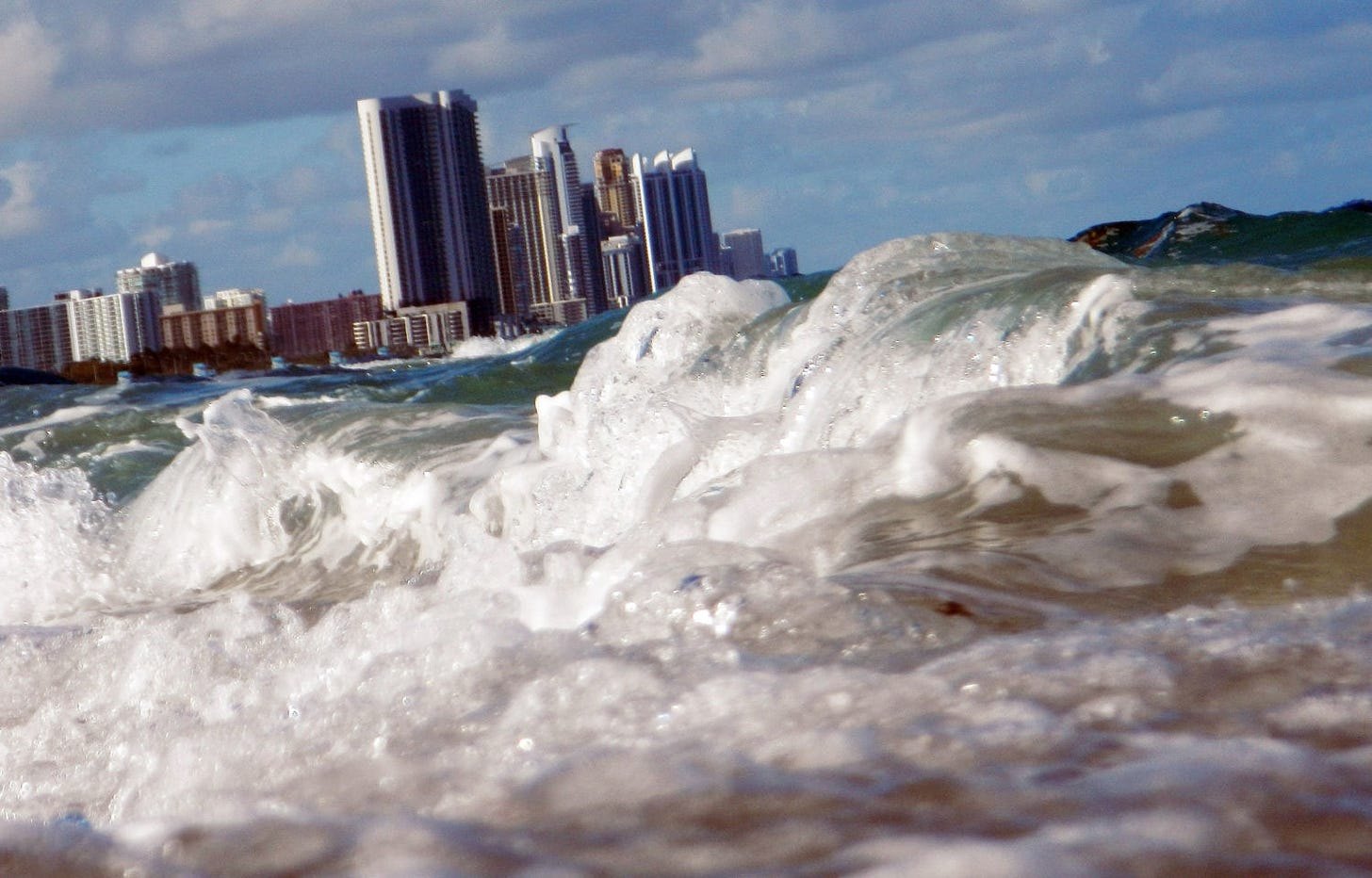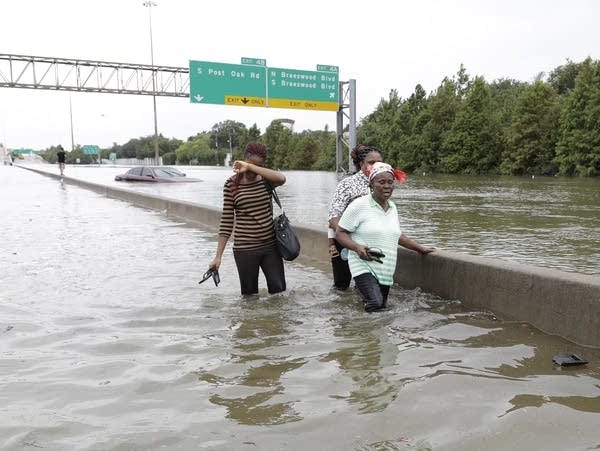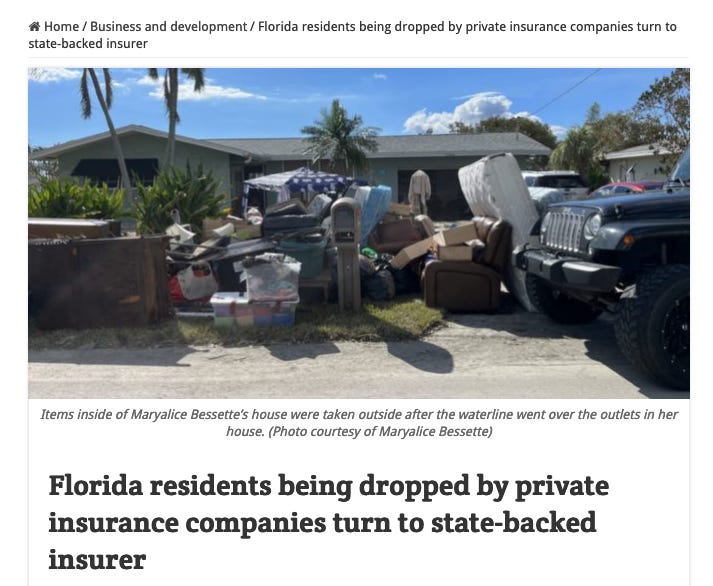Climate change is making hurricanes more destructive
Posted on 2 June 2025 by Guest Author
This is a re-post from the Climate Brink by Andrew Dessler
Because hurricanes are one of the big-ticket weather disasters that humanity has to face, climate misinformers spend a lot of effort muddying the waters on whether climate change is making hurricanes more damaging.
With the official start to the hurricane season in the North Atlantic coming up (June 1), I figured it was time to explain why we can be so confident that hurricanes are indeed more destructive today due to climate change.
Note: from here on out, I’ll refer to hurricanes as tropical cyclones (abbreviated TCs), which is a more general term for this type of storm.
We have 100% confidence that sea level is rising because humans are heating the planet. And higher sea levels mean today’s TCs do more damage than an identical tropical cyclone in a cooler climate because the storm surge is riding on a higher sea level.
As Prof. Adam Sobel said in Congressional testimony a few years ago:
The most certain way in which hurricane risk is increasing due to climate is that, because of sea level rise, coastal flooding due to hurricane storm surge is becoming worse. Storm surge occurs when the winds from a storm push the ocean onto the land. The total flooding is determined by the surge (the part produced by the wind), the tide, and the background average sea level. As sea level has risen … the flooding is exacerbated by that amount.
Climate misinformers will respond that sea level only contributes a small fraction to the total flood depth. But the non-linearity of flood damages means that even a small contribution from sea level rise to total flood depth can increase damages a lot.
For an example, imagine that your front door is six feet above a river. If the river rises 5 feet 11 inches, there is no damage. If climate change causes it to rise another 2 inches, you’ll have tens of thousands of dollars of damage.

For a more concrete example, in 2011, Hurricane Irene hit the New York region with a storm surge of around 1.5 meters; existing flood infrastructure was able to handle that and there was little damage. Just a year later, Hurricane Sandy hit the New York region with 2.75 meters of storm surge, overwhelming flood infrastructure and leading to massive damages of $62B.
This shows the non-linearity of climate damages: you get zero damage until a threshold is passed (somewhere between 1.5 and 2.75 m) and then damages increase exponentially.
Bottom line: Because of sea level rise, you can say with 100% certainty that climate change is making every TC more destructive.
Climate change will increase TCs’ rainfall due to the following logic chain: 1) much of the water vapor in air flowing into a tropical cyclone’s core will fall out as rain when the air ascends in one of the rain bands, 2) in a warmer climate, the air flowing into a tropical cyclone’s core holds more water vapor. Put points 1 and 2 together and you get more rainfall!

That’s it. You don’t need any fancy physics to understand why we’re so confident that tropical cyclones will produce more rain as the climate warms. In fact, the IPCC says that we are already seeing this:
There is high confidence that anthropogenic climate change contributed to extreme rainfall amounts during Hurricane Harvey (2017) and other intense TCs.
They also say it’s going to get worse as the climate continues to warm:
It is very likely that average TC rain rates will increase with warming.
Bottom line: You can be confident that TCs are already producing more rain due to climate change, and this is another way they are increasingly destructive. The future is for more of this.
The physics is clear: A warmer climate should fuel stronger hurricanes. Indeed, the IPCC says there is likely a trend in past hurricanes:
It is likely that the global proportion of Category 3–5 tropical cyclone instances … have increased globally over the past 40 years.
Here’s where it gets muddy: While we can see that hurricanes have gotten stronger, scientists are still debating exactly how much of this trend is due to climate change versus natural variability.
But when we look to the future, the uncertainty disappears. Climate models consistently show that, as the planet continues to warm, we’ll see a higher fraction of Category 4 and 5 hurricanes:
the proportion of Category 4–5 TCs will very likely increase globally with warming.
Bottom line: TCs are getting more intense, but the evidence on the cause of the historical trend is mixed. For the future, we can have high confidence that climate change will shift TCs to higher intensity.
Here’s a surprising fact: scientists don’t really know what controls the number of TCs in our atmosphere. We get about 80 of these storms globally each year, but we lack a solid theory for why it’s that number rather than 8 or 800. Without understanding the fundamental controls on storm formation, we can’t confidently predict whether warming will bring more or fewer TCs.
But even if the total number of TCs decreases, we could still end up with more of the most destructive storms. How? Remember from the previous section that climate change is shifting the intensity distribution — we’re getting a higher proportion of major hurricanes. So even with little change in the number of storms, the shift in proportion means we could still see increasing numbers of Category 4 and 5 monsters.
This matters enormously because storm damage doesn’t scale linearly with intensity. The most intense storms — Category 4 and 5 TCs — cause the vast majority of destruction. So any reduction in Category 1 or 2 TCs offers little benefit, as these storms typically cause little damage, but an increase in Category 4 or 5 TCs would bring enormous costs to society.
Bottom line: We don’t know whether climate change will bring more or fewer total TCs. But what really matters for human suffering and economic damage is what happens to the strongest storms. Even in a world where total TC numbers don’t change much, we could see numbers of the strongest TCs go up.
If there’s anything climate misinformers love love love to talk about, it’s how there’s no trend in the economic damages from TCs. The conclusion they want you to reach is that TCs are obviously not getting more destructive.
I could explain why this is wrong, but Kerry Emanuel already did it and you should just read what he wrote.
A more reliable yardstick of TC’s economic destructiveness is to ask the people who have money on the line: insurance companies. If you do that, the verdict is clear: insurance premiums are skyrocketing and companies are fleeing places that are vulnerable to TCs (Florida, Louisiana) — exactly what you would expect in a world where the risk of TC damage was going up.

Bottom line: The “no increase in damages” argument is not very good for many reasons. It deserves to be dropped into the dustbin of history, but it’s so useful to climate misinformers that I’m sure it will never disappear.
This post has only touched on the ways that TCs are getting more damaging. There are even more ways, such as changes in the tracks of TCs moving to higher latitudes, more frequent rapid intensification, or the slowdown of TC translation speed, all of which can also increase destructiveness.
Climate misinformers usually don’t dispute any of this. Rather, their method of misinformation lies in cherry picking the facts that bolster their stance. For example, they will focus on statistics like the number of TCs (or, worse, landfalling hurricanes), emphasizing that we don’t see any trend while conveniently omitting that climate science doesn’t predict increases in these.
And they fail to acknowledge the actual factors that are driving destructiveness, such as the increase of storm surge damage caused by sea level rise or the fundamental physics that tells us that TCs will produce more rain as the climate warms.
Instead of the selective offering of climate misinformers, you should look at all of the data. If you do that, it’s clear that hurricanes and other TCs are getting more destructive.



